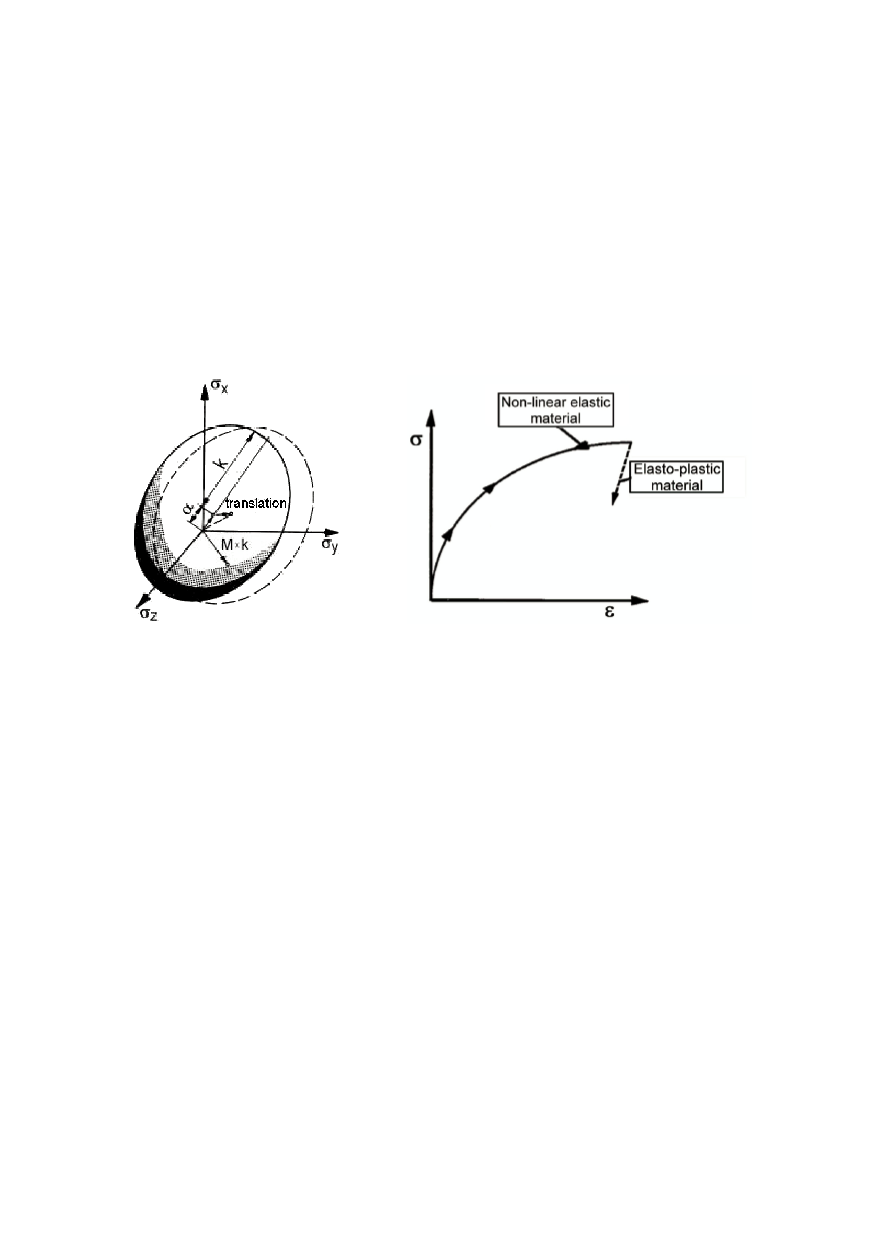

23
frequently used. Although here is not plastic material considered, if the loading is
proportional, the incremental and deformation theories produce the same results.
2.3. Micro mechanisms of fracture
For the application of the fracture mechanics in general, and particularly for elastic-
plastic fracture mechanics, it is important to establish the difference between brittle and
ductile fractures. Modes of fracture in steel and in its welded joint are transgranural
cleavage, microvoid coalescence and intergranular fracture, or their combinations.
Cleavage is rapid, unstable fracture usually of brittle materials, and ductile tearing
(microvoid coalescence) occurs in a slow, stable manner. Intergranular cracking can be
ductile or brittle. It is usually associated with a corrosive environment, grain boundary
segregation, or both. The fracture toughness parameters depend on fracture mechanisms.
Figure 3. Yield surface
Figure 4. Elastic-plastic and non-linear elastic material
Brittle fracture takes place by rapid crack extension and negligible plastic defor-
mation, with even, flat fracture surfaces. For most brittle crystalline materials, crack
propagation corresponds to the successive breaking of atomistic bonds along well defined
crystallographic (or cleavage) planes (in case BCC iron it is 100). For fracture to occur,
the cohesive strength of material must be prevailed and the tearing occurred when the
local stress is high enough to drive micro crack to grow locally in microstructure, at
carbides or inclusions). Transgranular fracture means that the crack grows through the
grains, changed the direction from grain to grain, in dependence of the atomic orientation
in particular grains. It is logical that, when the crack reaches the boundary of the new
grain, it searches new direction of the lowest resistance for further growth.
The places in the microstructure where the tearing occurs depend on the alloy and heat
treatment. In mild steels cleavage usually initiates at grain boundary carbides. In
quenched and tempered steels critical places are spherical carbide or inclusion.
Susceptibility to
cleavage fracture is enhanced by almost any factor that increases the
yield strength, such as low temperature, a triaxial stress state, radiation damage, high
strain rate, and strain aging. In ferritic steals, cleavage occurred at low temperature, with
temperature increases the fracture become ductile, based on microvoid coalescence.
The growth of the ductile crack is accompanied with significant plastic deformation
and the ductile fracture reveals characteristic coarse fracture surface. The mechanism of
crack growth is shown in Fig. 5. At the beginning plastic deformations cause formation of
small micro cavities in material at inclusions. In the next process development the


















